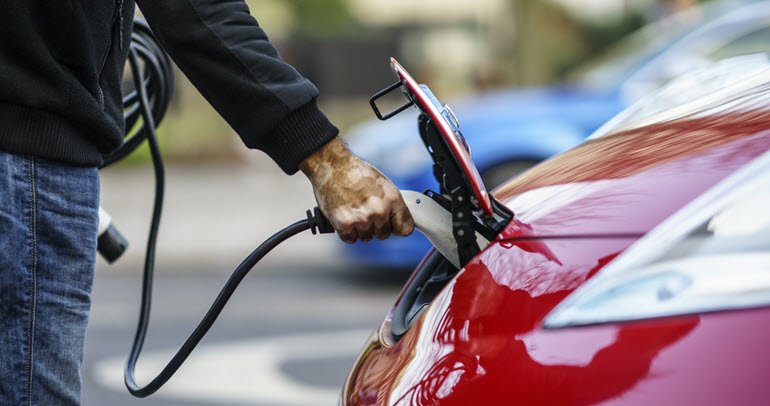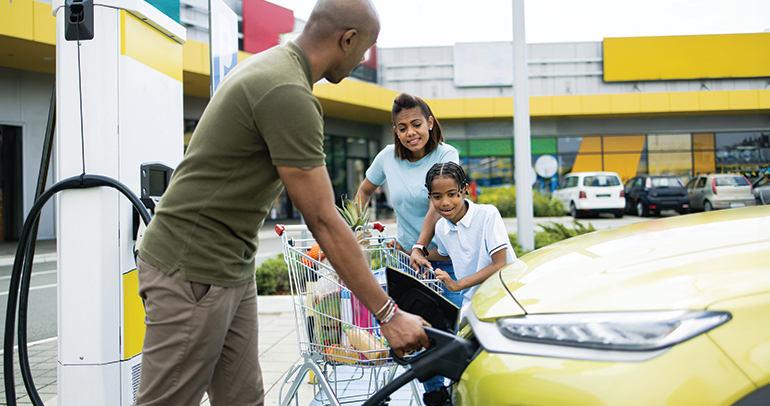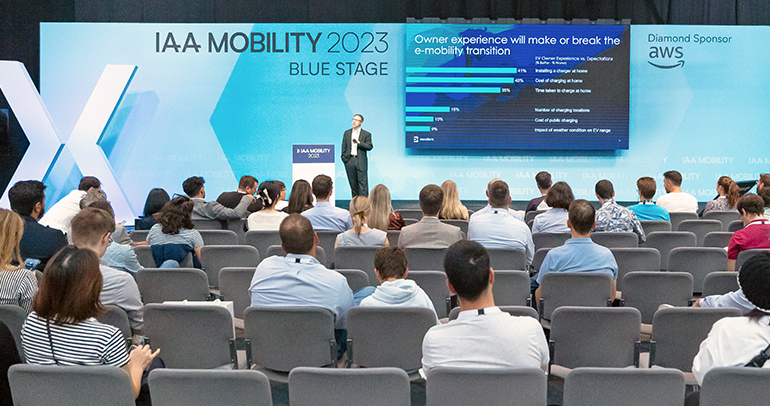
EV Potential Not Yet Realized
As we look back on the past decade, I think most of us would acknowledge that it has been a period of tremendous business innovation and industry disruption, whether that be Uber and Lyft upending the taxicab industry, Airbnb undercutting the hotel industry, or streaming video services that have caused consumers to abandon cable and satellite services.
In the coming decade, it seems clear that another industry that will undergo tremendous change is the automotive industry. In particular, auto manufacturers have already started to embrace and invest in technology that will profoundly affect the industry, transportation infrastructure and on consumers themselves: electric vehicles (EVs).
The potential benefits of EVs are numerous and important. Given the increasing threats of climate change, EVs represent a critical step in reducing our reliance on fossil fuels and in bettering our environment. In addition, EVs will provide consumers with lower operating and maintenance costs as compared to conventional vehicles.
At the same time, the trade-offs and barriers to EV adoption are also significant. Range anxiety (i.e., the worry that an EV won’t travel a sufficient distance on a single charge) has been a consistent concern of consumers since EVs’ inception. Additionally, even with the fastest chargers, charging times far exceed the five minutes it takes to fill up the gas tank of vehicles with internal combustion engines. Furthermore, while the number of public charging stations has increased significantly over time, they are still limited in number and would likely be insufficient to meet any major, short-term spike in EVs on the road.
Auto manufacturers and tech firms have been working hard to reduce these barriers. Batteries and electronics design have improved to the point where some of the latest models tout driving ranges of nearly 400 miles. Apps are now available to identify the location and availability of public charging stations. Public fast-charging stations are now able to recharge up to 80% of a vehicle’s battery in 30 minutes, and various organizations are working on initiatives to reduce charging times further.
While the adoption of EVs has grown over time, EV sales in the US still represent less than 2% of the total vehicle market. So, with all of these improvements and the environmental and cost benefits of EVs, why haven’t EV sales been booming? In addition, have tech initiatives really overcome the EV barriers they set out to address? I have some opinions based on my own experience.
Functional Benefits Aren’t Always Enough
When conducting consumer interviews last year on a wide range of topics including the steps that consumers would willingly take to combat climate change, I asked about the appeal of EVs. Most respondents were notably lukewarm to the general category, yet immediately added as an afterthought, “Now Tesla. That’s an EV that I could get excited about!” In probing further, the interest in Tesla wasn’t based so much on its environmental benefits, but rather its sleek, sexy styling and “cool” image. Given that the styling and image are combined with impressive battery technology and a host of tech features, it is little wonder that Tesla has dominated the US EV market.
The Chevy Bolt is the second most popular EV in the US, but still suffered an almost 9% drop in sales this past year. In its marketing materials, Chevy emphasizes the Bolt’s impressive driving range, low cost of ownership, safety and several other features. My middle brother, a proud Chevy Bolt owner, validates that these claims are true, but he also stresses an emotional benefit that Chevy fails to tout: the Bolt is fun to drive. With much more torque than internal combustion engines, the Bolt (and EVs in general) can accelerate faster, which makes merging with and maneuvering around traffic easier and more enjoyable. Yet, when it comes to marketing, Chevy appears to be promoting the Bolt on its functional and practical merits only rather than including an appeal to any emotional motivators (i.e., being fun to drive).
Charging: Not as Simple as it Seems
A little over a year ago, my Chevy Bolt-owning brother decided that he wanted to see if we could make the drive from the San Francisco Bay Area to Lake Tahoe. Knowing that the Bolt couldn’t reach the destination on a single charge, my brother’s first task was to figure out where one could find charging stations along the way. So, unlike traveling in a conventional vehicle with easy access to ubiquitous gas stations along the way, it became clear that EV charging would be more challenging because it involves up-front planning (e.g., knowing how far your vehicle can go, where charging stations are located, and being smart about when to stop to recharge).
After mapping out the trip and checking his charging station app, my brother came up with a plan to drive to a station about halfway to our destination. With our charging plan addressed, our next objective was to drive to the charging station and plug in and charge for about 45 minutes while we went to lunch.
On our travel day, all looked good. As we got near the charging station, the app gave us the precise location of the station and reassured us that no one was currently using the charger. However, when we finally reached the charging station, we found only one small problem: a vehicle with an internal combustion engine was parked in the charging space! Fortunately, after monitoring the situation for 15 minutes or so, the offending vehicle and owner moved on and we were finally able to begin charging.
The final challenge was climbing the Sierra Nevada mountains to get to Lake Tahoe. After recharging and embarking on the second half of our journey, the Bolt initially indicated that we would have more than enough battery life to get us to our destination. However, the additional variable to consider was altitude gain. Lake Tahoe sits at an elevation of over 6,000 feet, so climbing mountains to get there drains the battery at a much faster rate. As we gained elevation, our eyes were glued to the Bolt gauge as it continued to recalculate and reduce our projected driving range. While we held our breath climbing to the top of the pass, we made it to the cabin with 30 “driving miles” to spare.
Delivering on the Promise of EV
So, what are the lessons learned from these Tesla and Chevy Bolt experiences? Here are three take-aways:
- Appeal to Head and Heart
Since EVs offer some important functional benefits achieved through impressive technology, it is not surprising that some manufacturers have focused on function and technology to sell their products. However, consumers have long been motivated by other factors such as brand image, styling and design. Tesla has shown that consumers may value the functional benefits of an environmentally friendly vehicle and extended driving range, but they will become excited and motivated by the emotional benefits of a vehicle that looks good, feels good and is fun to drive.
- Success Comes Not Just from Products, But from Their Infrastructure
It is clear that the success of EVs will depend on a large, well-developed battery-charging infrastructure. Given the critical role of infrastructure, EV manufacturers that ignore this dependence and focus only on their products do so at their peril. Instead, these manufacturers should also be very concerned with developing initiatives and partnerships to establish a robust EV ecosystem that:
-
- Enlarges the network of charging stations: EV enthusiasts may not mind the hunt for charging stations during long-distance trips, but many other drivers will expect the kind of convenient access they get from gas stations today.
- Addresses battery charging throughput: Consumers are not likely to want to wait in lines behind other vehicles that take 30–45 minutes to charge. Industry players will need to consider a variety of potential solutions such as reducing charging time, installing more charging stations or even converting gas stations into roadside charging stations with coffeehouses and/or restaurants for customers as they wait for their vehicles to charge.
- Creates smarter charging technology and enforcement measures: Charging stations will need to become increasingly smart to monitor and record non-EVs that park in charging spaces. Collaboration with state and local officials will also be needed to enforce parking for battery charging (i.e., pass laws and enforce them by ticketing parking offenders).
- Eliminate Long-Range Travel Anxiety and Guesswork
The increased driving ranges of the most recent EV models should comfortably meet the needs of those with short commutes and those who drive in the general vicinity of their homes. With the installation of faster home chargers, these EV drivers can easily keep their vehicles charged and ready to go without worrying about public charging stations. However, EV adoption will really take off when consumers are as comfortable taking their EV on long-range trips as they are driving around town. In order to do that, manufacturers will need to find ways to make the process of monitoring and charging batteries less burdensome and anxiety-producing. Certainly, increasing the number of public charging stations will help significantly over time. In the meantime, manufacturers and third parties need to build on existing apps to provide more real-time information automatically. Instead of having drivers search out stations on a map and then figure out on their own which stations to seek out, smart apps could be created that could automatically recommend optimal stations based on the remaining driving range. Additionally, for trips with varying terrain (e.g., mountain ranges), smart apps could be developed where drivers enter their destinations prior to their trips. In turn, the app could then take into account elevation change and remaining driving range to estimate whether drivers would have enough battery charge to reach their desired destinations.
Make it Easy for the EV Consumer
In summary, it seems that the rate of EV adoption will depend in large part on how easy the industry makes it for consumers to:
- Fall in love with EVs through emotional as well as rational appeals
- Access and utilize the battery charging infrastructure they need
- Enjoy long-range trips without the anxiety and burden of excessive planning
If you like what we have to say here, you’ll be excited to know that we released a great white paper that does a deeper dive in the US as well as Europe on EVs, also referred to as BEVs: The Future of BEVs: How to Capture the Hearts and Minds of Consumers.








